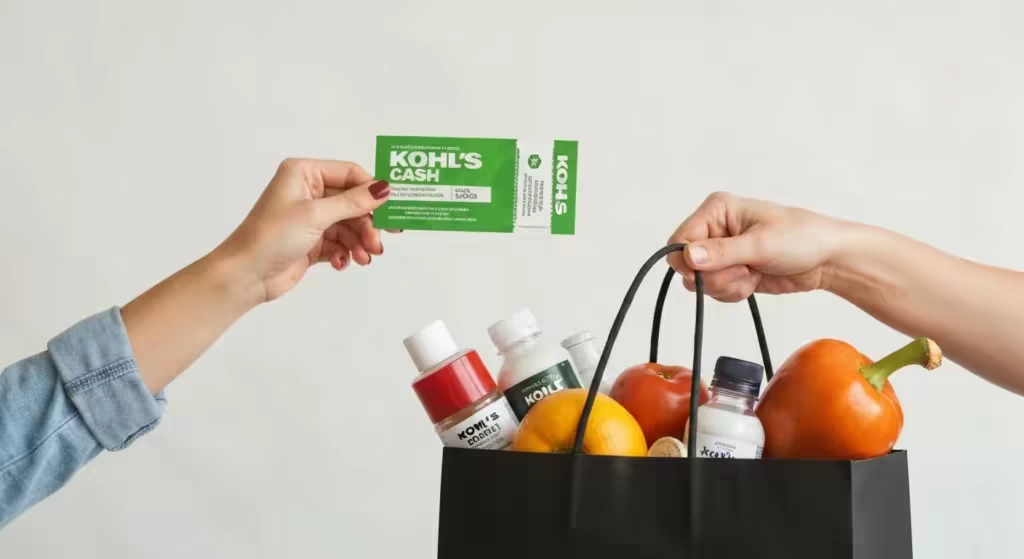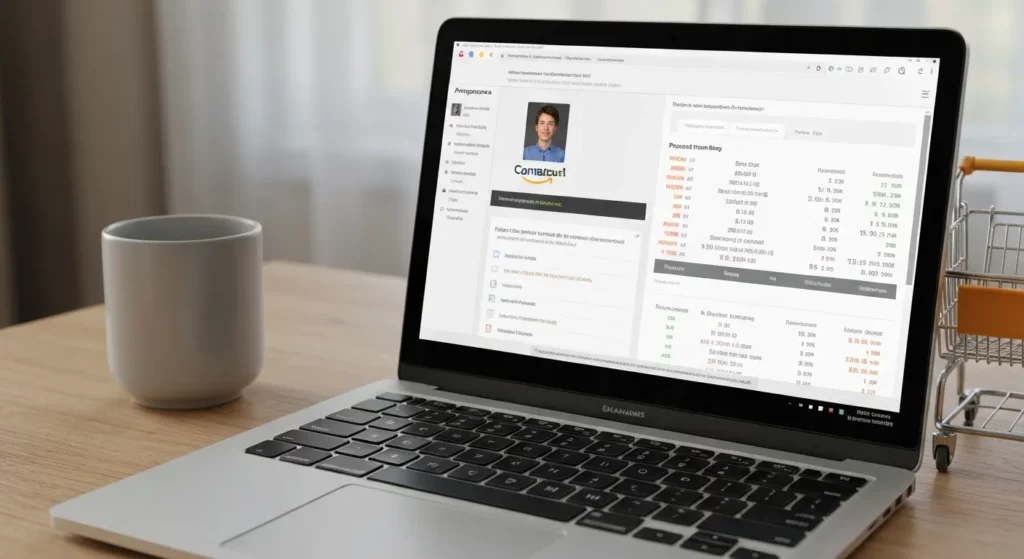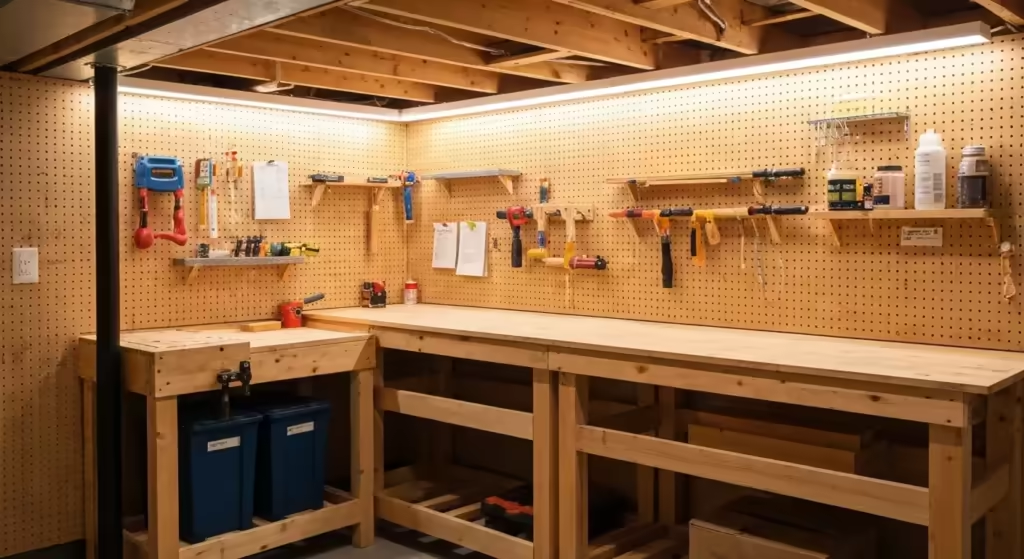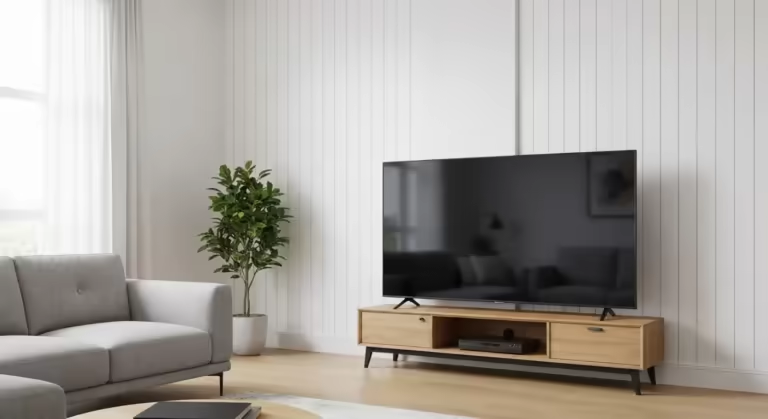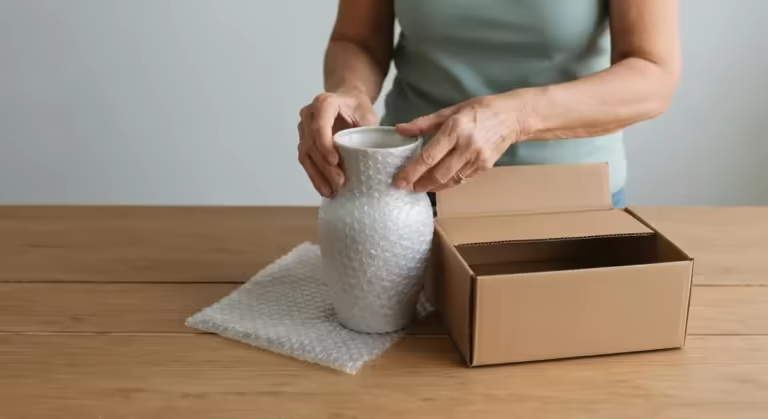The news hit me like a ton of bricks, right in my morning coffee. Bed Bath & Beyond was closing. All of them. For good. My first feeling was a genuine pang of sadness. I thought of all the years, all the milestones that store had seen me through. Wedding gifts for nieces, dorm room essentials for my son, and the perfect set of fluffy towels I bought myself the day my mortgage was finally paid off.
That store was a landmark of my adult life. But as the initial shock wore off, a different thought began to flicker, a tiny, practical spark in the back of my mind. My husband, Frank, and I had retired a few years back, and while we were comfortable, we lived on a careful budget. Every dollar had a job. And our guest room, the one we’d been meaning to refresh for our grandkids’ visits, was looking decidedly tired. The sheets were thin, the comforter had seen better days, and the coffee maker on the little hospitality cart had started making a noise like a disgruntled badger.
“Liquidation,” the news anchor said. The word itself sounded both exciting and a little predatory. I pictured chaotic stores, picked-over shelves, and deals that weren’t really deals at all. I’d been to a few “store closing” sales in my life, and they were often a huge disappointment. A measly 10% off items you could probably get for less with a regular coupon.
Still, that little spark persisted. What if… what if this time was different? What if I could figure out how to navigate it? What if I could turn this sad ending for a beloved store into a fresh beginning for our home, without derailing our carefully planned budget? I decided right then and there, this wasn’t just going to be a shopping trip. This was going to be a mission.
Chapter 1: The Lure of the First Markdown and a Hard Lesson Learned
A few days later, armed with a vague sense of purpose, I drove to my local Bed Bath & Beyond. The familiar blue and white sign was plastered with giant, almost aggressive, red and yellow posters. “STORE CLOSING!” they screamed. “EVERYTHING MUST GO!” and the one that had drawn me in: “UP TO 20% OFF EVERYTHING!”
My heart beat a little faster as I walked in. The energy was frantic. People were grabbing things off shelves, their carts overflowing. It felt less like a sale and more like a scavenger hunt where everyone was panicking. I took a deep breath and started to walk the aisles, trying to find my focus.
I headed straight for the bedding section, my guest room vision in mind. I found a beautiful sateen sheet set, originally $120. With 20% off, it would be $96. It was a discount, yes, but not the kind of deep, budget-saving deal I was hoping for. I could probably find a similar price during a regular holiday sale. I wandered over to the kitchen appliances. That sleek Cuisinart coffee maker I’d been eyeing for the guest room? Originally $150. The sale brought it down to $120. Again, nice, but not a liquidation-level bargain.
I spent an hour in that store, navigating the crowds, picking things up and putting them back down. A sense of deflation settled over me. This was exactly what I had feared. The discounts were just enough to create a frenzy but not enough to deliver real, substantial Bed Bath savings. I left with only a small gadget, a lemon zester I probably didn’t need, feeling like I had failed my mission on the very first day.
Driving home, I wasn’t just disappointed; I was frustrated. But then, a different thought took hold. This was just the beginning. The store had to get rid of everything. They couldn’t do that at 20% off. My mistake wasn’t in going; my mistake was in going too soon and without a plan. I had let the initial hype sweep me up. This was a marathon, not a sprint. The first lesson of my liquidation journey settled in: patience is the most valuable coupon of all.
Chapter 2: From Shopper to Strategist – Building My Battle Plan
I wasn’t going to let that first experience deter me. Instead, I decided to change my approach entirely. I wasn’t just a casual shopper anymore; I was becoming a student of the liquidation process. I grabbed a notebook and a pen, sat down at my kitchen table, and started to build a real strategy.
Step 1: The Wish List Becomes a “Needs List”
First things first, I had to get specific. A vague idea of “refreshing the guest room” was too broad. It left me open to impulse buys. I walked into the guest room and made a concrete list of what it truly needed to feel welcoming and comfortable for our family.
- A new Queen-sized sheet set (preferably high thread count, light color)
- A new Queen comforter (lightweight but warm)
- Two new standard pillows (medium-firm)
- A full set of bath towels, hand towels, and washcloths (white or light gray)
- A new, reliable single-serve coffee maker
- A small, quiet air purifier (our granddaughter has allergies)
This list was my anchor. It would keep me from getting distracted by discounted decorative pillows or fancy soap dispensers. This was about targeted acquisitions, not mindless accumulation.
Step 2: The All-Important Price Research
This was the most crucial part of my new plan, and it’s one of my most important final markdown shopping tips. A discount is meaningless if you don’t know the starting price. I took my list and sat down at my computer. I looked up every single item, not just on Bed Bath & Beyond’s old website, but on other retail sites too.
I learned that the Cuisinart coffee maker I wanted had a Manufacturer’s Suggested Retail Price (MSRP) of $149.99, but it often went on sale for $129.99 at other stores. This meant a 20% discount off the MSRP wasn’t a deal at all. I wrote down the *real* starting price next to each item in my notebook. Then, I set a “buy-it-now” price for myself – the absolute maximum I was willing to pay.
For the $150 coffee maker, my target price was $50. For the $120 sheet set, I aimed for $40 or less. It felt ambitious, maybe even impossible. But setting these goals gave me a clear benchmark for success. I wouldn’t be swayed by a percentage sign; I would only be moved by the final number on the price tag.
Step 3: Reconnaissance and Intel Gathering
I knew the discounts would deepen over time, but I didn’t know the rhythm. So, I started doing some light reconnaissance. There were three Bed Bath & Beyond locations within a 30-minute drive of my house. Once a week, on my way to or from other errands, I’d pop into one of them. I wouldn’t buy anything. I would just observe.
I’d walk straight to the items on my list and check their prices. I noted how the percentage off was increasing. First 20%, then a week later it was 30-40%. The crowds were thinning out, and the store was getting a little more organized, with dedicated clearance areas starting to form.
During one of these visits, I struck up a conversation with a friendly employee who was reorganizing a shelf of coffee makers. I didn’t pester her, I just asked how she was doing with all the chaos. We chatted for a minute, and then I casually asked, “Do you guys have a specific day you do the new markdowns?”
She smiled, a little tiredly. “We’re supposed to get the new discount directives on Monday, so we usually spend Tuesday morning changing all the signs and stickers,” she said. Gold. Pure gold. This was the inside information I needed. My weekly pop-ins would now become strategic Tuesday morning missions.
Chapter 3: Cracking the Code – My Three Pillars of Liquidation Success
As the weeks went on and the discount signs crept from 40% to 50%, I refined my strategy. It wasn’t just about patience and research anymore. I started noticing patterns, secrets hidden in plain sight. These observations became the core of my success, my personal clearance hacks that transformed my results.
Secret #1: The Back Wall Is Where the Gold Is Hidden
In every store I visited, the same thing started happening. As inventory sold down, the employees began consolidating. They would clear out entire aisles at the front and move the remaining merchandise toward the back. At first, it looked like a jumbled mess. But I quickly realized this was a treasure map.
This back wall section became my primary target. It was one of the best clearance sections at Bed Bath, if not the best. It was where you’d find a lone, high-end blender next to a stack of shower curtains. Because it was less organized, many shoppers seemed to skip it. They’d see the empty aisles at the front and assume the store was picked clean.
I learned to walk in, bypass the main part of the store, and head straight for the back wall. This was where the real hunting began. It took more digging, but the payoffs were infinitely greater. I found that air purifier from my list tucked behind a stack of bathroom scales, its price already marked down an extra 10% with a handwritten sticker because its box was slightly dented.
Secret #2: The “As-Is” Section is a Goldmine
One Tuesday morning, I discovered another hidden gem: a small, sad-looking collection of shopping carts near the customer service desk. A small, handwritten sign said “As-Is / Final Sale.” My curiosity piqued, I went to investigate.
This was a pile of customer returns, floor models, and items with damaged packaging. A high-end Dyson vacuum was there because its box was ripped open. A beautiful KitchenAid mixer was present because it was a color that had been discontinued. And there, sitting in a cart, was a Cuisinart coffee maker. Not the exact model I had on my list, but a slightly better one. The box was beaten up, but the machine inside looked untouched, still wrapped in its protective plastic.
The price tag was a revelation. It wasn’t subject to the store-wide 50% discount. It had its own, even lower, price scribbled on a sticker: $60. It was already below what the other model would have cost with the store-wide discount. This became a non-negotiable part of my visits. I would always check the back wall first, then make a beeline for the “As-Is” section. It was a lesson in looking past superficial flaws to find true value.
Secret #3: The Final Price is the Only Thing That Matters
This sounds simple, but it was the hardest discipline to maintain, and the most powerful. The big signs in the store were screaming “50% OFF!” and then “60% OFF!”. It’s easy to get caught up in that number and feel like you’re getting a massive deal on anything you touch.
But my notebook kept me honest. I would pick up an item and ignore the big, exciting percentage. I would look only at the final price sticker. Then, I would look at my notebook. Did it match or beat my target “buy-it-now” price? If yes, it went in my cart. If no, I put it back, no matter how tempting the discount seemed.
I watched people filling their carts with things, giddy with the “60% off” feeling. But I knew that 60% off an overpriced item is still an overpriced item. My strategy wasn’t about the thrill of the discount; it was about the quiet satisfaction of meeting my budget. It was a mental shift from being a consumer swayed by marketing to being a financial manager executing a plan.
Chapter 4: The Final Haul – The Thrill of the 70% Victory
About two months after my very first, disappointing visit, the moment arrived. I walked into the store on a Tuesday morning and saw the sign I had been waiting for. The red and yellow poster had a big “70%” printed on it. The store was a shadow of its former self. It was quiet, with only a handful of other shoppers. The shelves were sparse, and entire sections were blocked off with yellow tape.
This was it. This was the endgame. My heart was pounding, but this time it wasn’t with frantic energy; it was with focused adrenaline. I grabbed a cart, my notebook clutched in my hand, and got to work.
I went straight to the back wall. It was a strange landscape of lonely products. And there it was. A stack of three Wamsutta Dream Zone 800-thread-count sheet sets. The original price, which I knew by heart, was $199.99. I did the math in my head. With 70% off, the price would be just under $60. My target price had been $50, but for this quality, it was close enough. I put one in my cart. Victory #1.
Next, towels. The towel section was decimated, but on a bottom shelf, I found a pile of Nestwell Egyptian cotton bath towels, hand towels, and washcloths, all in a lovely light gray. They weren’t a matched set from a package, but they were all from the same line. I gathered up four of each. The original total would have been over $150. My final price? Around $45 for the entire bundle. Victory #2.
My biggest quest was the coffee maker. The “As-Is” section was gone, folded into the general chaos. I scanned the kitchenware aisle, which was now just one long shelf against the wall. And then I saw it. The exact Cuisinart single-serve brewer from my list. There was only one left. The box was perfect. The original sticker said $149.99. I held my breath and did the calculation. 70% off $150 is $45. It was five dollars *under* my target price. I carefully placed it in my cart, feeling a ridiculous surge of triumph. The Grand Prize.
I found a lightweight comforter and two perfect pillows in that same final sweep. When I finally wheeled my cart to the register, I was nervous. I watched the cashier scan each item. The sheets, the towels, the pillows, the comforter, the coffee maker. My entire guest room refresh, plus a few extra towels for our own bathroom.
The original retail value of everything in my cart was just over $600. The cashier hit the total button. “That’ll be $182.45,” she said.
I nearly laughed out loud. I had done it. I had completely outfitted a room with high-quality goods for less than the original price of the sheet set alone. I paid, a huge smile on my face, and pushed my cart out of the store for the last time. It wasn’t with sadness, but with a deep, profound sense of accomplishment.
My Reflections: More Than Just a Bargain
As I unpacked my treasures at home, I realized this journey was about so much more than just shopping. In the years since retiring, I’ve sometimes struggled with feeling like my sharpest skills—the ones I used in my career—were gathering dust. This mission gave me a project. It required research, strategy, discipline, and patience. It engaged my mind and gave me a tangible, rewarding goal.
I had faced a financial challenge—wanting to create a beautiful space for my family without tapping into our savings—and I had met it on my own terms. I didn’t just save money; I earned it through cleverness and hard work. There’s a powerful feeling of security that comes from knowing you can be resourceful, that you can make your money work smarter for you. It’s a confidence that is truly priceless, especially on a fixed income.
The next time my grandkids came to visit, their eyes lit up when they saw the “new” guest room. My granddaughter hugged me and said, “Grandma, it feels like a fancy hotel!” Hearing that was worth more than any discount.
This whole experience taught me that opportunities for smart savings are everywhere, even in the midst of a sad event like a store closure. It just requires a shift in perspective. You have to be willing to look past the chaos, ignore the hype, and stick to your plan. And if you do, the rewards can be greater than you ever imagined.
My Bed Bath & Beyond Liquidation Secrets, Distilled for You:
Based on my personal journey, here are the key lessons I learned. Think of it as my personal guide on how to shop Bed Bath & Beyond liquidation sales, or any liquidation sale for that matter.
- Be Patient and Play the Long Game: The real deals don’t show up for weeks. Don’t fall for the initial 10-20% off frenzy. Wait until the discounts hit at least 50% or more.
- Create a Mission-Specific “Needs List”: Know exactly what you are looking for before you enter the store. This prevents impulse buys and keeps you focused on your goals.
- Become a Price Historian: Research the true original price of items on your list. A 70% discount on an inflated “original price” is a marketing trick. Know what an item is worth.
- Set a “Buy-It-Now” Price: For each item on your list, determine the absolute maximum you are willing to pay. Stick to this price religiously. Your budget, not the sale sign, is your boss.
- Perform Weekly Reconnaissance: Learn the rhythm of your local store. Identify when they do new markdowns and try to shop on those days for the best selection at the new, lower prices.
- Master the Store’s Geography: As the sale progresses, learn where the best clearance sections are. For me, it was the back wall and the “as-is” section. These areas often hold the best, overlooked deals.
- Inspect Everything Carefully: Especially in the final stages, check items for damage or missing parts. Remember that all sales are final, so you can’t bring anything back.
My Bed Bath & Beyond adventure is over, but the lessons I learned will stay with me forever. It was a powerful reminder that with a little strategy and a lot of patience, we have the power to take control of our finances and create the life we want, one savvy deal at a time.





